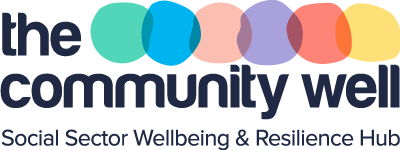PREVENT
WORK HEALTH AND SAFETY
Support your organisation to protect the health, safety and wellbeing of its volunteers and staff.
What is Work Health and Safety?
Every organisation has a legal obligation in relation to workplace health and safety, privacy and anti-discrimination for the people who work and volunteer there.
This means:
- Organisations are required to protect their people from physical and psychological harm.
- A staff member or volunteer’s mental health condition can’t be shared with anyone without their permission unless there is a direct risk to their health and safety or that of others.
- Workplaces cannot take adverse action against a person because of their mental illness.
Why does this matter?
A workplace that takes an active role in workplace health and safety prevents harm to its people.
This includes minimising and managing discrimination and privacy breaches.
Whilst this module focuses on Work Health and Safety, these laws don’t operate in isolation. See below for where to find further workplace legal information.
What does this look like when it's managed well?
Employees and volunteers see and experience positive, effective and timely handling of issues or incidents. This builds trust and care. Employees and volunteers trust that their organisations have got a good grip on their obligations and that this is evident in practice, not just in theory. People are asked about their day-to-day experience and what could work better.
What does this look like when it's not managed well?
There is a lack of clarity, or at worst, it is obvious that the workplace is unsafe from physical or psychological harm. Workplace issues are common but people won’t raise or voice their concerns. This can erode trust which can undermine a healthy work culture.
WORK HEALTH AND SAFETY
Ways to use this module
This module comprises a selection of resources and tools to support your organisation to safeguard the work health, safety and wellbeing of its volunteers and staff. It focuses on preventing mental health injuries but please note that a physical injury at work can also have a negative impact on a person’s mental health. In addition to work health and safety, which is the focus of this module, all officers, employees, contractors, suppliers and volunteers must observe and comply with all laws that relate to their engagement, including, but not limited to workers compensation legislation that operates in each state and territory and criminal laws, including recently introduced industrial manslaughter offences.
In order to get the most out of the resources below:
- Read the work health and safety laws and the psychosocial safety fact sheet to understand your primary duty of care.
- Download and work through the psychological health and safety checklist and workplace bullying risk indicator.
- Use the results to assess your risk and guide you to where you need assistance.
- Report to your board as part of your risk management process.
- If you need further information about workplace laws, such as worker’s compensation, refer to the final resource in the list below.



